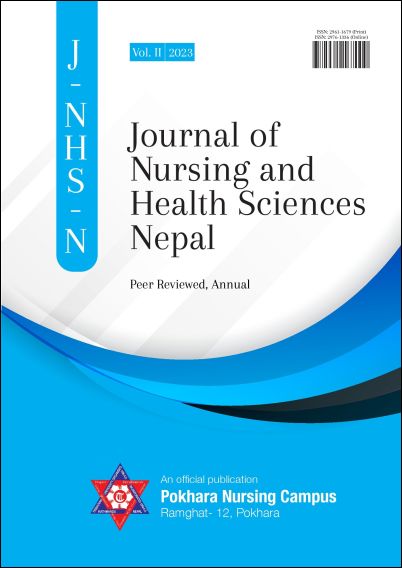Knowledge Regarding Reproductive Health Among Young Married Women Residing in a Municipality of Jhapa District, Nepal
DOI:
https://doi.org/10.3126/jnhsn.v2i1.66430Keywords:
Young women, adolescent, reproductive healthAbstract
Introduction: Every year 16 million girls aged 15 to 19 years and 2.5 million girls under age 16 years give birth followed by some 3.9 million girls aged 15 to 19 years who undergo unsafe abortions in developing regions. This study aimed to find out the knowledge of reproductive health among young married women of Birtamode Municipality.
Methods: A descriptive cross-sectional study was carried out among 398 young married women using a convenience sampling technique. Data were collected using the structured schedule. Data were analyzed using descriptive statistics and the Chi-square test was applied to measure the association between knowledge of reproductive health and selected variables.
Results: Most of the respondents (82.9%) were between 20-24 years of age with a mean (SD) age 21.74(±2.13) years; 44.2 % had secondary education; 46.2 % were farmers; and 64.2% lived in a joint family. More than half (54.5%) had adequate knowledge regarding reproductive health. Respondents’ level of knowledge was significantly associated with their age, educational status, economic status, and ethnicity.
Conclusions: It is concluded that more than half of the young married women had adequate knowledge regarding reproductive health. However, 45.5% had inadequate knowledge regarding reproductive health. Therefore, there is still a need to enhance knowledge by raising awareness programs, counselling sessions, and educational initiatives regarding adolescent and youth-friendly health services at the community level.
Downloads
Downloads
Published
How to Cite
Issue
Section
License
Copyright (c) 2023 The Author(s)

This work is licensed under a Creative Commons Attribution 4.0 International License.
This license enables reusers to distribute, remix, adapt, and build upon the material in any medium or format, so long as attribution is given to the creator. The license allows for commercial use.




